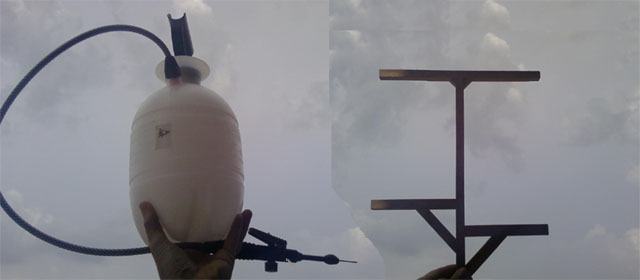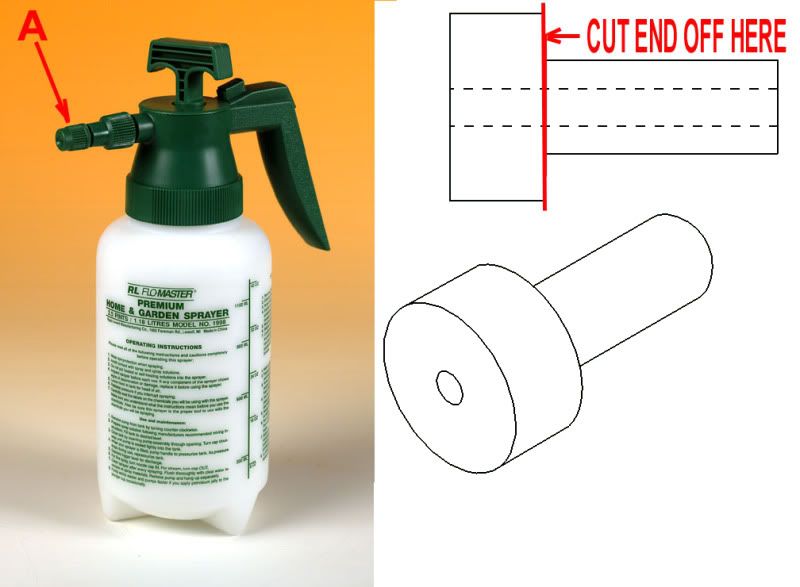Announcement
We've Moved
The forum here @ PSC has been fun, but we're going to transplant it in much more fertile pastures.If you already have a PSC account, use your email address to Request A New Password to get started @wetJacket
#1 Tue, Jul 27, 2010 6:26 AM
- hemlock
- Karma: 1
- Regular
- Skis At: Ness Lake BC, Canada
- Foot Forward: Left
sink skier buoy
Hello,
I've been searching the forum, but couldn't find information on how to actually sink the 6 ski balls.
We can't afford the bubble buoy system, so I would like to try the half filled with water solution.
Any tips on how to accomplish this?
Someone mentioned a garden hose sprayer, and a connection to the air pin, but all I have is the air pin.
Same one to fill up soccer, or basketballs.
I just have a bicycle pump for adding air.
Thanks,
#2 Tue, Jul 27, 2010 12:44 PM
- h20dawg79
- Karma: 10
- Water Ski Sage
- Skis At: Old Hickory Lake, TN.
- Foot Forward: left
Re: sink skier buoy
TW is the pro on that. Shoot him an e/m if he does'nt see this thread...
"Warning" -the Surgeon General has determined; That the preceding statements accurately reflect the views and opinions consistent with "DSS" (Delusional Slalomitis Syndrome) a highly contagious life altering condition... (Handle with Extreme care & Patience)
#3 Tue, Jul 27, 2010 1:12 PM
- BudMan
- Karma: 8
- Slalom Mentor
- Skis At: Bud Lake
- Foot Forward: Left
Re: sink skier buoy
I have read a lot of good post on the forums about water in turn buoys. I did not find on the forums how much water, other than “40%.” I thought I would share what I found through experimenting. I used ½ gallon in the turns and ¾ gallon in the gates. The reason I am using water in the gates is to balance to wind shift with the turns. I would not think there would be much difference in how much the wind displaces a buoy with all air verses partial water filled buoy, but it was easy to do, so why not do it and rule out the debate. I have been skiing a little while now with just the turns with water and had a tip roll over on three occasions and the buoy just dipped and no problem. I thank each every one of you that paved that “water buoy” road ahead of me. Over five years ago I tore up an ankle that started by the tip catching #4 buoy at -38, rear foot came out of Animal then front came out of Animal toe first.
As far as I know TW did the testing on how much weight it takes to hold down the watered turns. I used a 3 lb. hand weight and it confirmed what TW posted was right. He showed using a ball type weight but I had no idea where to get them and thought something slimmer might work better. I am using small bungee now but plan to switch to weighted adjustment soon. I plan to make my weights out of PVC pipe with gravel inside and heat the ends to flatten them out. That should allow the air to escape but keep the rocks in. I will drill a hole in the top to attach the line going up to the buoy. I will try to follow up with the diameter and length of pipe I use for the 3 lbs. I also have an idea of heat shaping a small piece of PVC pipe for the rope to bypass the sub-buoy. I will also try to post a picture of that after I test it. There have already been pictures of tanks posted, but I’ll post mine anyway. I used some epoxy to attach my needle after I cut off part of the stem. I like a tank with a hose because it allows you to do other things while you buoy fills. I am also attaching a picture to share of a jig I made many years ago to size the buoys.
There is no “safe” but I think there might be fewer injuries from water buoys than the old 100% air buoys. 
Life is great! Enjoy every minute!
#4 Tue, Jul 27, 2010 2:03 PM
- HO410
- Karma: 9
- Slalom Mentor
- Skis At: Outlaw Lake
- Foot Forward: Right
Re: sink skier buoy
The quickest (to get started) and dirtiest method is to shove your bicycle pump underwater and pump away. This is kind of slow and tedious, I'm sure the garden-sprayer method is much more convenient.
Last edited by HO410 (Tue, Jul 27, 2010 2:05 PM)
#5 Tue, Jul 27, 2010 2:39 PM
- Thomas Wayne
- Karma: 5
- Slalom Mentor
Re: sink skier buoy
HERE IS A CUT & PASTE OF THE RESULTS OF ONE OF MY LATER EXPERIMENTS, CONDUCTED IN 2006:
[...]
In five feet of water I anchored two buoys, one filled only with air and the other filled half with air and half with water; both balls were identical in size (about 9” diameter) and suspended so that half their diameter was submerged. It should be noted that the water/air ball actually contained slightly less than 50% water, in order to support the PVC arm of a floating ski course. Although the regular anchor lines on my courses are a bit longer than five feet, I chose that depth to anchor the experiment so that I could easily stand on the bottom to take measurements. The buoys were anchored approximately 18” apart – that is to say, the gap between them measured 18”.
Using a spring-loaded fisherman’s scale and a scuba mask, I first measured the amount of pull necessary to submerge each buoy entirely, with the top-dead-center of the buoy just below the surface of the water. The all-air buoy required slightly under 13lbs, while the water/air buoy required just over 6 lbs – about ½(!) the required force.
Using a simple sling made of nylon cord and a piece of T-shirt fabric, I then measured the force required to pull each buoy sideways until it touched the other buoy, closing the 18” gap. This measurement was a little harder to read consistently, but ultimately the all-air buoy clearly required significantly more than TWICE the force required by the water/air buoy.
Lastly, I used an aluminum boat hook handle to strike each buoy from various angles, observing the amount of force required and the ease and speed of displacement. It was absolutely obvious that the water/air buoy displaced far more easily than the all-air buoy.
Of course, the force used to pull a buoy straight down, or straight sideways, may differ greatly from the force(s) applied when a ski strikes the same buoy; it may be argued, for example, that inertia becomes the overwhelming issue, and that the water/air buoy has greater “mass” and therefore greater resistance to sudden movement.
I disagree. It is quite true that out of the water, the water/air buoy weighs much more than the all-air buoy. But when half-submerged, I believe the water in the buoy become insignificant - over the short distance that a buoy is displaced when struck by a ski. This is because the water essentially weighs nothing when the buoy is in the water, and the outer surface area of the buoy is identical to an all-air buoy. I believe that when a ski strikes a half-filled buoy at speed the buoy itself is displaced instantly, while the water merely finds itself temporarily in a different location within the buoy.
I can understand the idea that a buoy containing 50% water would be heavier - though in water it’s actually NOT. And I can understand why suggesting that such a half-filled buoy is safer might seem counter-intuitive, but all the evidence points to just that. In our experience, striking a half-filled buoy while skiing is not nearly as harsh as striking a buoy that is filled with air [and then submerged to its mid-line].
Of course, your mileage may vary, and striking ANY floating (or slightly submerged) object while skiing is likely to be dangerous under any circumstances. In fact, I once saw a skier get very seriously hurt after hitting a paper picnic plate that was floating invisibly just under the surface. But it is my learned opinion that putting some water in your skier balls is not necessarily the most dangerous thing you can do.
[...]
TW
Last edited by Thomas Wayne (Tue, Jul 27, 2010 3:08 PM)
#6 Tue, Jul 27, 2010 3:06 PM
- Thomas Wayne
- Karma: 5
- Slalom Mentor
Re: sink skier buoy
Attached below is a photo of the garden sprayer we use to fill buoys. Home Depot stocks them, they're cheap (~ $6), and VERY easy to convert.
The image shows a drawing of the internal urethane component that seals the business end of the sprayer. To convert to a ball filler you unscrew the plastic nozzle ("A") and modify this rubbery translucent part by cutting off the end part (as indicated). Using a small drill bit, finishing nail, of other pointy object, you'll then enlarge the hole in the plastic nozzle ("A") until an inflation needle can just be forced through.
Reassemble; the remaining shank of the inner component (now modified) will seal against the base of the inflation needle and you're ready to go. Fill the jug with water up to about the front logo - experimentation will teach you the correct amount - and then screw the lid on tightly. Somewhere around 100 or so pumps should provide enough air pressure to expel all the water AND enough air to fill your buoys to the ~ 8" diameter you're looking for.
As always with DIY stuff, your mileage may vary.
TW
#7 Tue, Jul 27, 2010 4:06 PM
- h20dawg79
- Karma: 10
- Water Ski Sage
- Skis At: Old Hickory Lake, TN.
- Foot Forward: left
Re: sink skier buoy
Ya, what he said! -Zactly!!!![]()
"Warning" -the Surgeon General has determined; That the preceding statements accurately reflect the views and opinions consistent with "DSS" (Delusional Slalomitis Syndrome) a highly contagious life altering condition... (Handle with Extreme care & Patience)







